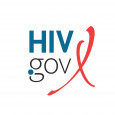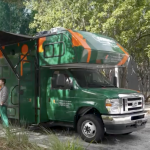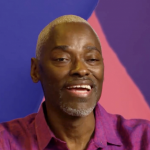This post is by Loyce Pace, Assistant Secretary for Global Affairs, Department of Health and Human Services.
This year’s World AIDS Day marks the 35th commemoration of this important day that was established to remember those we have lost to AIDS-related illnesses and to honor the more than 39 million individuals with HIV around the world. We honor their courage and resolve that have led us to the progress we have made thus far.
This year also signifies the U.S. President’s Emergency Plan for AIDS Relief’s (PEPFAR) 20th anniversary and its incredible work supporting nearly 65 million people with HIV treatment and testing services and providing more than 20.47 million women, men and children with life-saving antiretroviral treatment globally this year. In the U.S., the Ending the HIV Epidemic in the U.S. (EHE) initiative has enabled 57 priority jurisdictions to increase community-driven programming which, in turn, has increased the number of people in care and on pre-exposure prophylaxis (PrEP).
Our achievements are not only cause for hope, but also a reminder that our work is not done, a charge to all of us in the global HIV community to keep going. In too many communities, barriers to comprehensive HIV prevention and treatment are impacted by limited awareness, access, and engagement of partners. HIV-related stigma and discrimination continue to hinder our ability to effectively support vulnerable populations.
For us to reach the goal of ending AIDS by 2030, communities and community-led organizations must lead the way. People living with, at risk of, or affected by HIV have been at the forefront of our fight against HIV and other public health emergencies. Their passionate advocacy and sacrifices have led us to decades of progress in reducing new HIV infections worldwide. Communities play a vital role in designing and implementing culturally responsive and equitable strategies, programs, research, and advancing policies.
We have long known communities to be crucial partners in advancing people-centered public health services. Programs and initiatives do best when driven by the voices of the most impacted communities. Community health workers are vital in improving TB case detection, enhancing linkage to care, and improving treatment support and success.
It remains our collective responsibility to support communities in their leadership roles. They must be actively engaged at all levels, from design, implementation, and monitoring of programs to policy decisions at the highest level. We must listen to what people with lived experience tell us what works and what doesn’t work.
Working closely with communities in the lead, along with public and private partners, is critical to reach our 2030 goals. Such partnerships can help accelerate research, expand access to prevention and care, fight stigma, and raise awareness.
The U.S. government is committed to promoting community-based approaches to ending HIV/AIDS as a public and global health threat that address health inequities, expand access, and ensure the voices of people living with HIV are central in all our work. Let us remember and commit once more, with communities in the lead.
To learn more about World AIDS Day please visit the HIV.gov website.
This blog post was published December 6, 2023, on HIV.gov.
For more related articles in POZ, click #World AIDS Day.








Comments
Comments